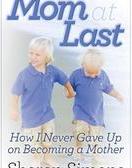Food allergies are a very serious problem for children. They can cause discomfort, pain and potentially closed airways if anaphylaxis occurs. Food allergies are different for every child. It can be difficult to understand everything associated with the allergies although parents do need to become educated about the condition. Every mom must know five things about food allergies.

Be Aware of Cross-Contamination
Cross-contamination can trigger food allergies in children. Cross-contamination occurs when small pieces of one food are mixed with another. This can happen when using the same utensils, bowls or cutting boards. Even very small amounts of food that are not visible can trigger the allergy. It is important to keep foods that trigger allergies isolated from the food, dishware and items that children will use.
Symptoms of an Allergic Reaction
Children having an allergic reaction to food can start to experience coughing, runny nose and watering eyes. This can escalate to a rash, nausea and stomach pain. Severe symptoms include visible swelling, vomiting, difficulty breathing and fainting or dizziness. Children who are experiencing serious symptoms need medical attention immediately in order to prevent or treat anaphylaxis.
Food Allergies Can Change
There is a one in five chance that food allergies will change over time in children. The allergy could turn into an intolerance or go away completely. Some children can go from a mild allergy to a severe allergy. The foods a child is allergic to can change. Some children develop new allergies over the years. Parents should always be aware of the reaction children have to food even if previous tests showed no allergy to a particular item.
Food Allergies Are Different From Other Allergies
Food allergies are caused by proteins in certain foods. They are different from most other types of allergies. The treatments for children who suffer from indoor allergies are different from what must be done to control food allergies. Antihistamines will not really help with food allergies. The only way to deal with food allergies is to avoid the specific foods that trigger a reaction. This can mean avoiding touching or even smelling the foods for children with severe allergies.
How to Use an Epinephrine Injector
Parents should know how to use an epinephrine injector. These injectors are used when a child experiences anaphylaxis. Different injectors have different instructions that parents should understand fully. The general process is to open the injector, press it firmly against the thigh and then wait for several seconds. This can save the life of a child. Children who require an injection should be taken to a doctor immediately afterwards.


